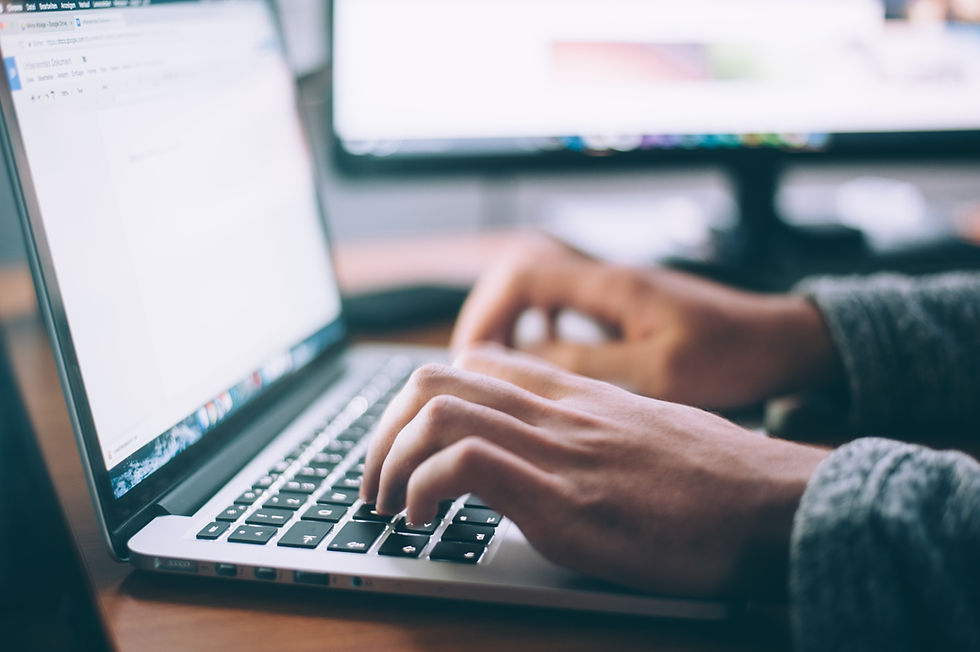‘And breathe’… How Pilates helps you to calm down
- Rachel Walsh

- May 31, 2020
- 3 min read
One of the major upsides to being in lockdown is the lack of pollution and spending more time in nature. We no longer hear the drone of the nearby M40 as my daughter and I head out for our daily scooter ride and instead birdsong dominates.
Although being furloughed brings its own worries, it has allowed me to adjust to a new pace of life that I fully intend to carry on 'afterwards', whatever that looks like. On the first day of lockdown I created hourly schedules and structured activities, worrying about how to fill the time up. Now I can happily fill a day with woodlouse hunting and bouncing on the trampoline!
One benefit to slowing down is the move from the ‘sympathetic’ nervous system (that 'fight or flight' mode that produces responses to perceived danger, releasing hormones like adrenalin and cortisol) to the ‘parasympathetic’ system. That's the one that calms everything down and predominates when you rest.
So if you’re struggling with increased stress, worry and uncertainty at the moment, read on for a few tips to enhance your Pilates practice and leave you feeling more relaxed.
1. Concentrate
The art of being able to block out other thoughts isn’t at all easy, but one of the aims of Pilates is to be able to focus fully on each movement, bringing together mind and body. That means attempting to banish thoughts of what’s for dinner or that looming work deadline.
Achieving this just takes practice but personally I find it much easier to be mindful while moving (running, walking, Pilates) than I do sitting down with a meditation app.
2. Breathe
Breathing in Pilates is conscious and should be focused into your ribcage area. It’s called ‘lateral thoracic breathing’ and depresses the diaphragm and expands the ribcage out to the sides and into the back. Try to breathe in through the nose and out through the mouth.
I give cues throughout the class but the main thing is just to keep breathing! This really does help you to relax, engage your core correctly and get more out of the class. Again, it’s hard at first but does come with practice.
3. Have awareness
Through Pilates we can learn our own body’s strengths and weaknesses, which in turn brings body awareness. It’s about learning how to choose what’s right for you and not to always choose the hardest option and compromise technique. It’s our instinct to challenge ourselves but it’s just as important to focus your mind on how your body feels as you begin to exercise. This will be different every time you get on the mat. By recognising any areas of tension you can concentrate on trying to release this tension and relax.
4. Create the right environment
While we’re all at home it’s important to create a nice space to exercise in. Move any clutter out of the way so the mat looks inviting. Easier said than done I know (you should see my ‘den’ before I’ve cleared it before class!).
5. Minimise disruption
If possible, turn your phone off and let your family know to leave you alone during class, even if you’re just doing a short video sequence. It’s much easier to get distracted if exercising at home so make sure you are commit to some real you time.
6. Give yourself a break!
It’s easy to get frustrated with yourself for not doing enough (exercise/housework/gardening/work/filing/decorating/other to-do list items) but remember to give yourself a big pat on the back for showing up to class and carrying on with Pilates despite the stress and worry of world events. Appreciate what you are doing instead of worrying about what you aren’t.
I hope you all stay safe and well and are enjoying the amazing weather!





Comments